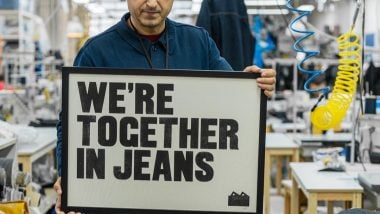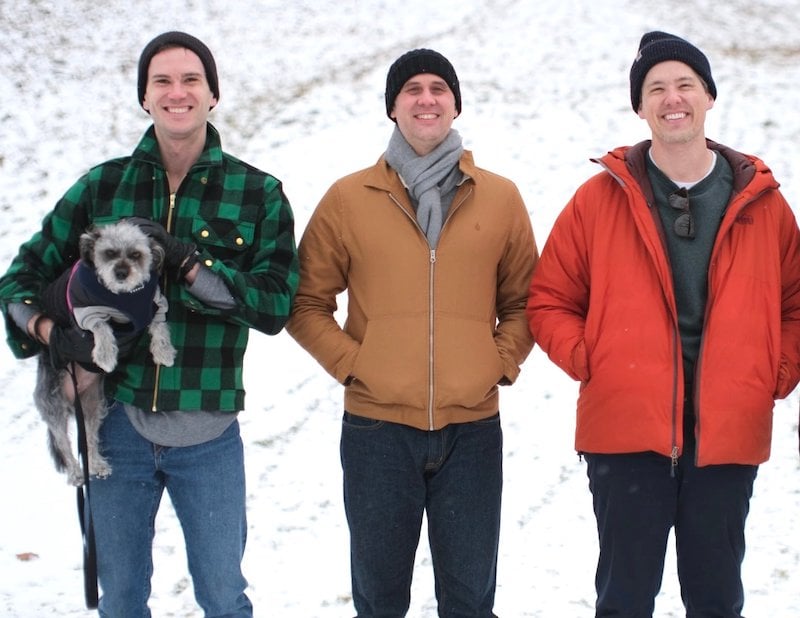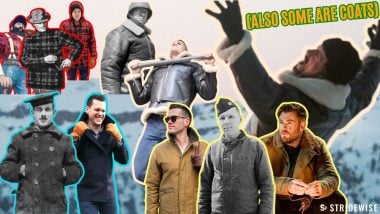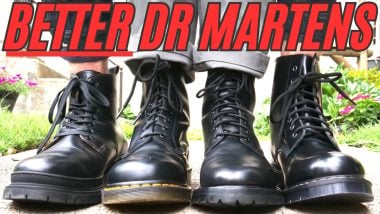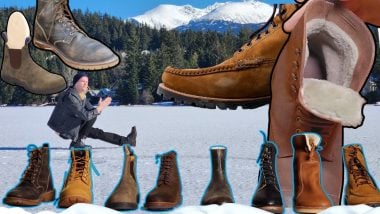Just How Denim Jackets Became So Popular: History of the Denim Jacket

Expert Verified By: Mohsin Sajid | Denim Expert
There is perhaps no article of clothing more evocative of the American aesthetic than the denim jacket.
Cool, rebellious, rugged, and chic, this timeless garment is as stylish today as it was when it first popped on the scene in the early 20th century. As ubiquitous as blue jeans and leather boots, it’s easy to assume that the denim jacket just always was, but it actually bears an interesting history, traced along the contours of cowboys and counterculture punks.
We consulted with Mohsin Sajid, a denim historian, consultant, and brand creator. He created the brand Endrime and is known as the Dumbledore and Rambo of all things denim.
So, where did the accessory actually come from, and why does it have so much staying power? We’ll explore all that and more in our history of the denim jacket.
The Origins of Denim
Before we get into the denim jacket, we have to chat about the origins of the sturdy cotton twill textile that gives it its distinctive texture: denim. The name itself hints at these beginnings, as “denim” is derived from “de Nîmes,” or “of Nîmes,” a city in the Occitanie region of southern France where the material was born.
Further Reading
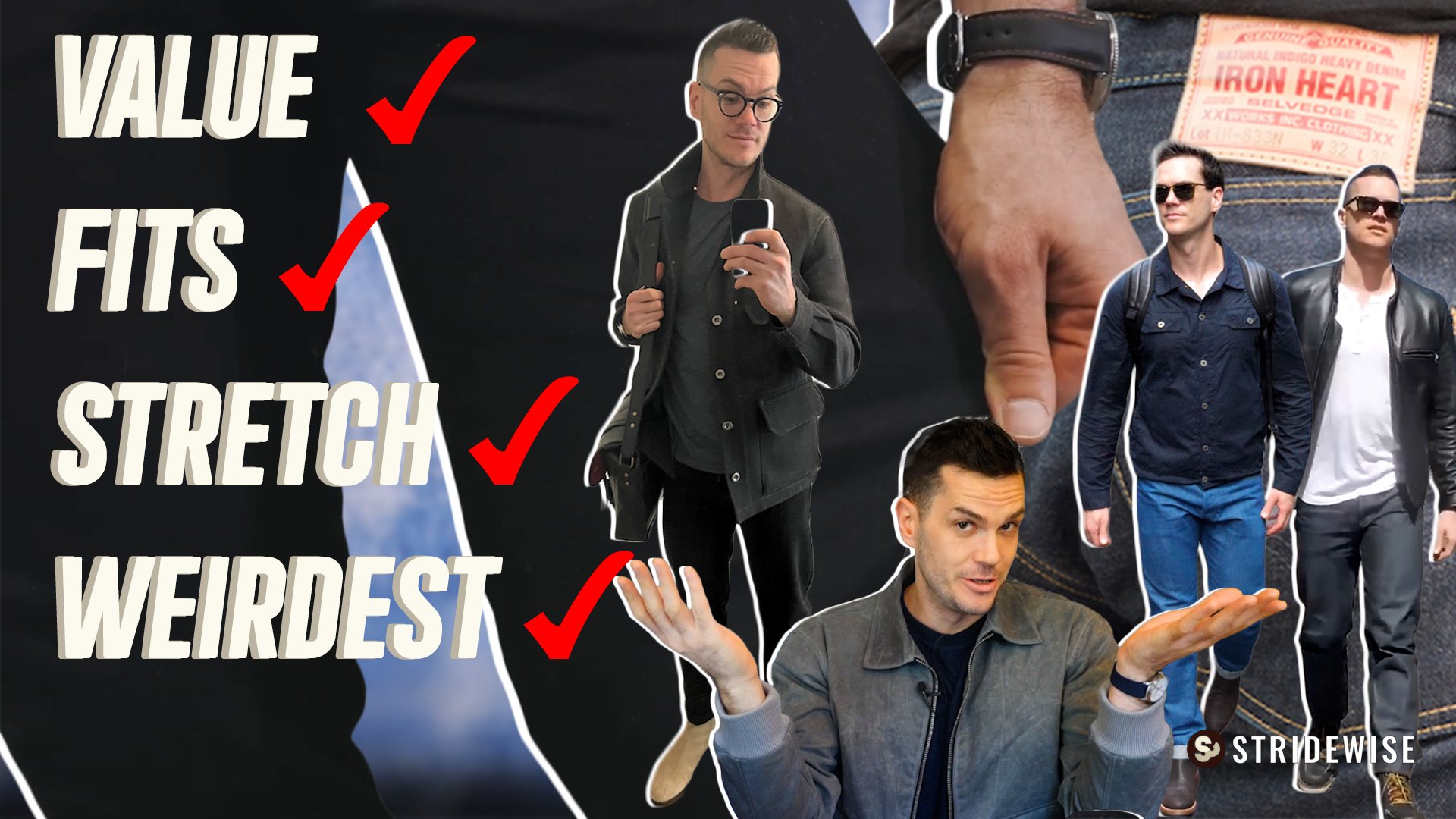
Best Selvedge Denim: 9 Solid Brands Expert Tested for Quality, Value, & Weirdness
Interested in learning about how denim was first made?Learn more →
The fabric was reportedly developed in the early 19th century for sailors who needed tough trousers and jackets to withstand the harsh conditions of the open sea. Denim more than fit the bill, and quickly became the de facto material for seafolk and explorers across Europe. It was so popular, in fact, that it caught the eye of an American businessman who would forever change the way we dress. That man, of course, was Levi Strauss.
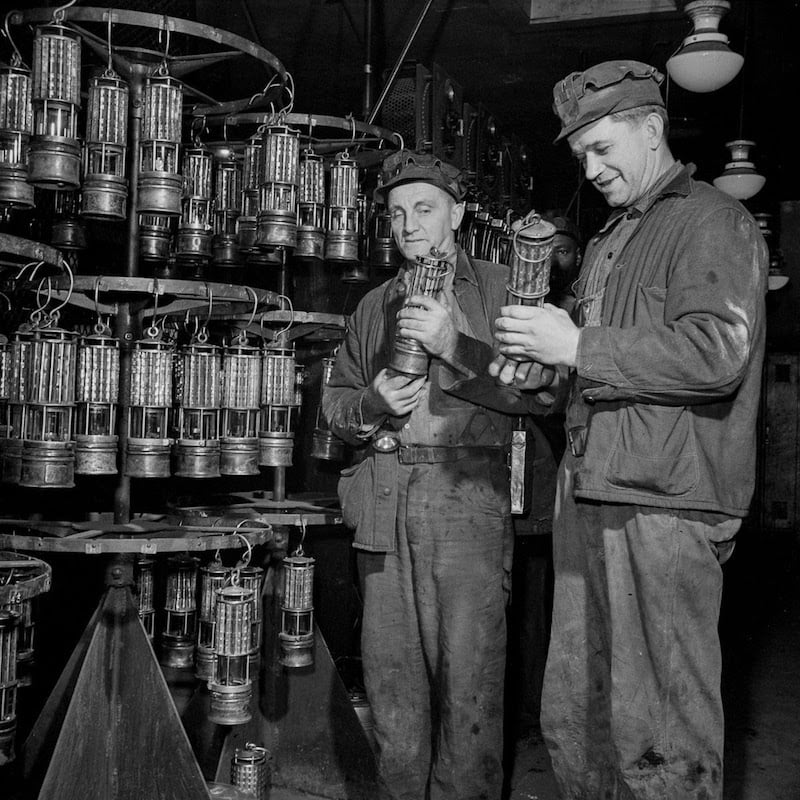
The Jean-ius of Strauss
It’s said that Strauss brought denim over to the United States in the 1850s, where it was whipped into utilitarian trousers by designer Jacob Davis. The pair peddled the new pants to California miners during the gold rush and found the community to be a real mint of a demographic. There was such high demand for the work trousers (the seedling of the modern day “blue jean”) that Strauss and Davis decided to design a second denim garment: the Levi’s Blouse.

The Early Denim Jacket: The Triple Pleated Blouse
“So, everyone always thinks it starts with the Type 1. It didn’t.” Mohsin explains, “It started with the Levi’s triple-pleated blouse from around 1874 or 1880, depending on who you speak to. It’s a lovely style — very refined, single-needle tailored, very beautiful. The pleats on the back are awesome, too.” It features a 3/16th twin-needle stitch, and the earliest versions weren’t made from denim at all! In fact, duck canvas was the material mentioned in the patent filed in 1873, but once the signature denim versions became popularized, there was no going back.

The Type 1 Denim Jacket (1930s)
With the 1930s came the advent of the Type 1 Denim Jacket. This jacket featured a beautiful boxy cut and is known for having one pocket on the side. “In addition to the cropped fit, the sleeves were designed to be short so you could move more freely while working,” Mohsin says. “The pleats were added so that when the wearer gained weight, they could undo the pleats and still wear the jacket.”
Meant to be worn with denim trousers, this relatively simple design had only four buttons. The garment gained quick popularity among miners and was soon introduced to other groups of outdoor laborers, such as railroad workers and cowboys. This latter demo became particularly associated with the blouse, which, by 1930, had evolved into the “Slim Jacket,” a design similar to the denim jacket we know and love today.

The Type II Denim Jacket (1950s)
“To the most untrained eyes, it looks very similar to the Type 1. It’s got an extra pocket now, it’s a slightly different shape,” Mohsin tells me. “It’s slightly more fitted. It hasn’t got the cinch buckle like on the back; it’s now got little adjusters.”
The Type II has a cinch waist that you would tighten to get more of a V shape. “Back in the day, you wouldn’t have got a specific size, like a 33,” Mohsin explains. “You’d buy the size u,p and then you would just cinch it up. That’s the whole point, so you can still wear it for many years.”
Further Reading

How to Style a Denim Jacket for Men: Uncomplicating Cool
Trying to pull off a denim jacket? We’ve spoken with style experts. Learn more →

The Type III Denim Jacket (1970s)
Next, we move on to the Type 3, a style introduced in 1967. The Type II has a very distinct pocket shape and pleating going down the front.
“The Type 3 is known for being more fitted. The pleats are sewn down, making the jacket more figure-hugging,” Mohsin says. “The extra seams along the front also make it more form-fitting. The V-shape pleats are another update, a design choice that helped refine the jacket’s fit.”
The Type 3 is often called the trucker jacket, as the pockets were moved to the chest to make them easier to access while sitting.
Today, the Type 3 is the most popular style you’ll find in flea markets and recycling plants. Because it was produced more recently and on such a scale in the 1960s and 1970s, it is far more commonly available on the used market.

Railroad Style Chore Jackets
Another type of jacket that can’t be ignored — aside from the triple pleat blouse and the Type I and its later imitations — is the classic railroad-style chore jacket. These have gone through many variations over the decades. The style dates back to the 1920s, and this particular example is a beautiful piece from the 1930s. What’s especially notable about it is that it’s made with a 2×1 denim fabric, which is very lightweight. Most denim from this era was made from fabric of this weight, and that’s part of the reason so few of these styles have survived—they were simply too delicate for long-term wear.
Lee and Wrangler’s Influence
Some historians believe that the pleats in the Type 3 were influenced by the Lee Storm Rider jacket from the 1950s. No matter how you cut it, denim brands were influencing each other, and these pleats became a common feature in many styles.
Wrangler also contributed to denim history. They created a version of the Type 2 with embroidered bar tacks instead of rivets. This made it easier to recycle the jacket.

Hollywood & The Denim Jacket
Denim entered the public consciousness at pretty much the same time cowboys did, thanks in large part to the popularity of Hollywood Westerns in the 1930s.
In these films, cowboys were portrayed as strong, masculine rebels who operated outside the sphere of “civilized” society. They took matters into their own hands, sought justice, kissed the girl, and saved the day, all while swaggering about in tough-looking denim duds.
While these representations weren’t totally true to the cowboy experience (which entailed a lot less machismo and a whole lot more, you know, hard labor), the image stuck, and cowboys and the clothes they wore were cool, even if denim was still as yet not commercially available.
Further Reading

Type 1 vs Type 2 vs Type 3 Denim Jackets: Which Is Right for You?
Knowing which cut of denim jacket works best for your style is super important, too short and you’ll look like an old-time train conductor. Learn more →
Denim would get another boost from Hollywood in the 1950s and 60s when filmmakers swapped out the western rebels of yore for a new type of antihero: the young, handsome rebel without a cause.
“Up until the 1950s, denim was only worn for manual labor,” Mohsin elaborates. “It wasn’t considered fashionable. But as Hollywood celebrities embraced denim, it became a symbol of rebellion. The younger generation wore denim to defy the older generation, who didn’t like it. So, denim began to be known as a rebellious garment.”
James Dean embodied this spirit in the namesake film as well as by the likes of Marlon Brando and Steve McQueen, broody hunks who typified a new masculine ideal of angst, ennui, and distrust of “the man.” Oh, and yeah, they also happened to wear stylish denim jackets like, all the time
Counterculture to Commercialization
It was around this time that denim spiraled outwards to the public. Though popular with many folks, it caught on most quickly with the counterculture youth of the ’60s, who donned it in defiance of their parents’ button-upped professional wear.
As with most “cool” trends, the denim jacket eventually entered the mainstream, becoming a closet staple by the 70s and 80s. Artists like John Lennon and Bruce Springsteen especially popularized the look, making it accessible for rockers and blue-collar workers alike. By the time the early aughts rolled around, the denim jacket was an undeniably universal accessory, reproduced by everyone from Levi & Strauss to Wrangler, Calvin Klein, Tom Ford, Gucci, Dior, and more.
Well folks, that about does it for this deep dive into the history of the denim jacket. For more fun denim content, check out our guide to the 4 Biggest Misconceptions About Raw Denim.
Featured image via Fæ, licensed under Creative Commons Attribution-Share Alike 3.0 Unported


